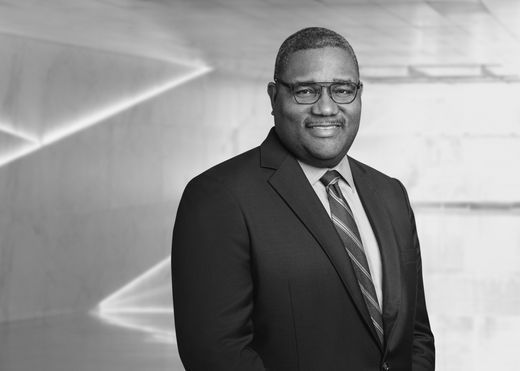NLRB GC Memo Says Certain College Athletes Are Employees, Have Right to Unionize

Key Points
- The NLRB’s General Counsel issued a memorandum providing her position that the NLRA protects student-athletes who “perform services for their colleges and the NCAA, in return for compensation” and are “subject to their control.”
- Coverage under the NLRA would permit student-athletes to form and join unions and potentially require athletic conferences and many private universities to bargain collectively with labor unions that represent student-athletes. It also would increase the risk of litigation for unfair labor practices.
- The memorandum, which follows the recent Supreme Court decision in NCAA v. Alston, reflects a departure from court decisions that have previously rejected claims that student-athletes who receive athletic scholarships and other benefits are entitled to the same protections as employees covered by various labor and employment laws.
On September 29, 2021, the General Counsel of the National Labor Relations Board (NLRB) issued a Guidance Memorandum (“Memorandum”) setting forth her view that certain student-athletes are employees under the National Labor Relations Act (NLRA). The Memorandum, which reinstates portions of similar guidance issued in 2017 under the Obama administration, draws on the recent Supreme Court decision in NCAA v. Alston, 141 S. Ct. 2141 (2021), finding that the National Collegiate Athletic Association (NCAA) could not prohibit its member schools from providing student-athletes with certain forms of education-related benefits under federal antitrust laws.
According to the General Counsel, that decision, along with recent state laws and relaxed NCAA rules allowing students to earn compensation using their name, image and likeness, supports the view that student-athletes qualify as employees under the NLRA. In particular, the Memorandum cites the common law agency rules defining an employee as an individual “who performs services for another” and is “subject to the other’s control or right of control,” and notes that under those rules, “consideration, i.e., payment, is strongly indicative of employee status.”
Although the NLRB has not previously ruled on whether student-athletes are employees protected under the NLRA, it came close to doing so in 2015, when members of the Northwestern University football team attempted to form a union. See Northwestern University, 362 NLRB 1350, 1356 (2015). Ultimately, in that case, the NLRB declined to exercise its jurisdiction to determine the players’ employment status, but the Memorandum states that the evidence presented at the time—including that “the football players received significant compensation, including up to $76,000 per year, covering their tuition, fees, room, board, and books, and a stipend covering additional expenses such as travel and childcare”—demonstrates that the “players at issue in Northwestern University clearly satisfy the broad Section 2(3) definition of employee [under the NLRA] and the common-law test.”
The Memorandum sets forth the General Counsel’s position that student-athletes similarly situated to the Northwestern football players “should be protected” under the NLRA “when they act concertedly to speak out about their terms and conditions of employment, or to self-organize, regardless of whether the Board ultimately certifies a bargaining unit.” The Memorandum further explains that “misclassifying” athletes as non-employees, “leading them to believe that they do not have statutory protections” under the NLRA, will be viewed as an independent violation under the Act.
As explained in the Memorandum, the General Counsel would apply the protections of the NLRA to players who “perform services for their colleges and the NCAA, in return for compensation” and are “subject to their control.” Although the NCAA forbids the payment of salaries to players, the Memorandum focuses on “tuition, fees, room, board, books, and stipends” paid by universities. The Memorandum also targets NCAA rules, such as “the maximum number of practice and competition hours, scholarship eligibility, limits on compensation, minimum grade point average, and restrictions on gifts and benefits players may accept,” and “the manner and means” universities ensure compliance with NCAA rules. Thus, student-athletes who are not subject to NCAA rules or do not receive athletic scholarships and related benefits may remain exempt from the NLRA.
While not binding authority, the Memorandum signals a shift in thinking about whether academic institutions that use athletic scholarships to recruit student-athletes may be considered employers. Coverage under the NLRA would permit student-athletes to form and join unions and require their employers to bargain collectively the terms and conditions of their employment. It also would increase the risk of litigation for unfair labor practices. Although most state universities and religious educational institutions are exempt from the NLRA, the General Counsel still may pursue charges against private universities and athletic conferences or associations to which they belong. For instance, both private universities and athletic associations may be charged under Section 8(a)(1) of the NLRA with misclassifying players or restricted in their ability to promulgate rules of play without first bargaining with unions selected by the players.
Notably, the General Counsel’s position is at odds with other decisions in the employment context, where courts have concluded that student-athletes are not employees of the NCAA or their athletic conferences. For example, in Berger v. National Collegiate Athletic Association, 843 F.3d 285 (7th Cir. 2016), the 7th Circuit held that two former student-athletes on the University of Pennsylvania’s track and field team were not entitled to a minimum wage under the Fair Labor Standards Act (FLSA) because they were not employees of the NCAA. Similarly, in Dawson v. National Collegiate Athletic Association, 932 F.3d 905 (9th Cir. 2019), the 9th Circuit rejected federal and state wage and hour claims of a football player at the University of Southern California, holding that he was not an employee of the NCAA or PAC-12. More recently, a former Villanova football player brought a collective action under the FLSA, alleging that student-athletes in the NCAA are entitled to minimum wages. See Johnson v. Nat’l Collegiate Athletic Ass’n, No. 2:19-cv-05230 (E.D. Pa.). Although that case remains pending, the court recently denied motions to dismiss, allowing the players to proceed against their former universities and the NCAA, under a joint employer theory. Regardless of whether the players in Johnson prevail, there may be similar cases filed against universities and conferences asserting claims under various employment laws, including potential claims under state and federal wage and hour and antidiscrimination laws, relying on similar theories of players’ employment status. Congress also has considered legislation that could impact the relationship between athletes and their schools and athletic conferences.
These efforts may ultimately fail to alter the legal relationships between players and their schools or athletic conferences. Nevertheless, as universities and athletic associations evaluate how to proceed in the emerging legal landscape— including in determining the scope of educational benefits permitted under Altson and the use of name, image and likeness agreements—it is important to be mindful of ways in which the NLRA and other employment laws could potentially be implicated.



